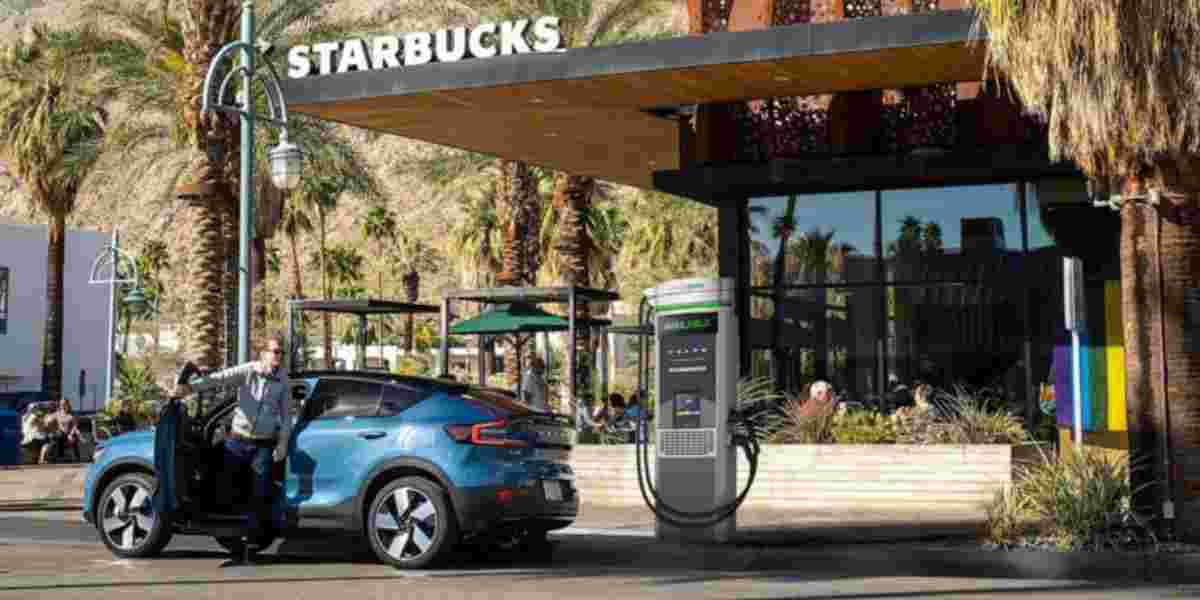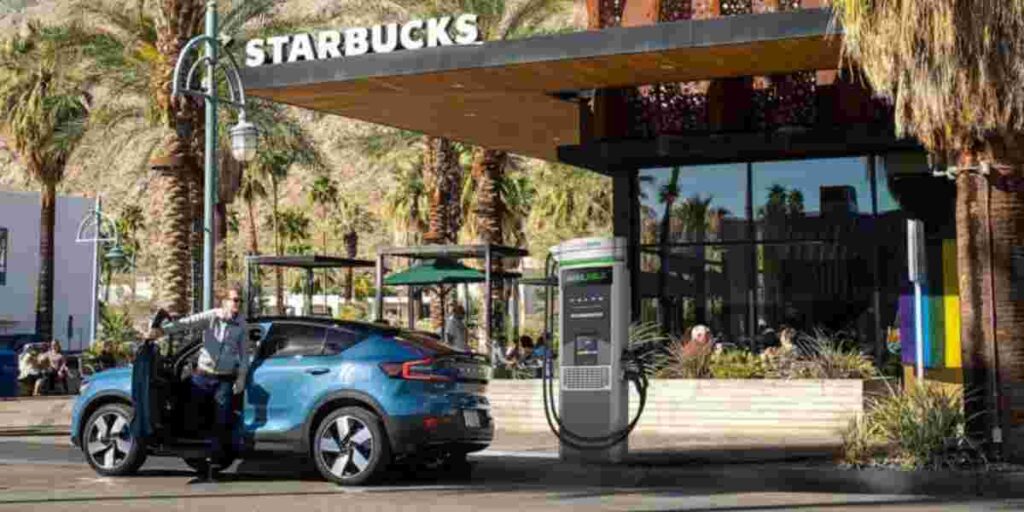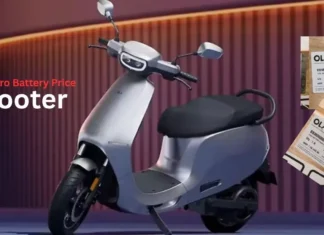
Buying an electric vehicle for the first time may be harder than ever these days.

The choices are no longer Tesla, Tesla, Tesla. There are pickup trucks, SUVs, crossovers, sedans, sports cars and hatches available from nearly every automaker. Seventy-two models (battery, plug-in hybrid, fuel cell) are currently on the market with more launching later this year and next.
Washington lawmakers threw another wrench into the EV equation with the passage of the Inflation Reduction Act. Consumers are now wondering if that EV they’ve been eyeing still qualifies for the $7,500 federal tax credit. The Department of Transportation on Tuesday launched a site to help confused consumers navigate the new restrictions on EV tax credits.
Plus, with national fuel prices below $4 a gallon, limited inventory at dealerships and a public charging network that has been derided, what will drivers decide? “There is a growing interest and awareness of EVs,” Ed Kim, president of consulting firm AutoPacific, told ABC News. “The main reason people buy an electric vehicle is because they want the latest technology.
Tesla still has a stronghold in the market – 80% of EV sales last year were Tesla – but that will change in the coming years. “. According to a recent survey commissioned by Polestar, the Swedish electric performance brand, 55% of American drivers buy electric vehicles for reasons other than environmental benefits.
“In-vehicle technology, seamless connectivity and infotainment system offerings have been named the most important decisions for consumers switching to an electric car from an internal combustion vehicle,” the company said. Industry watchers agree that affordable mass-market electric vehicles will accelerate sales and help meet President Joe Biden’s electrification goals. How has the electric vehicle game changed and which models are fast becoming popular with drivers?
The EVs making waves with consumers
Ford Motor’s F-150 Lightning pickup truck will likely be a blockbuster for the Dearborn automaker. One of the first EV trucks to hit the market, Ford has sold more than 4,400 Lightnings in the first six months of 2022 and has 200,000 reservations from interested buyers. Ford said its share of the U.S. EV market hit a record 10.9% in July (Ford also sells the Mustang Mach-E and E-Transit van). “The Lightning rides and handles so much better than the regular F-150,” said Kim.
“The power and torque are stupendous … it has a low center of gravity and feels more planted to the ground and stable when driving it.” He went on, “This a well thought-out product and a reflection of the fact that Ford understands the truck customer better than anyone else.” The EV truck market has only begun to heat up; General Motors has shown a prototype of its all-electric Silverado truck and GM’s Hummer EV has been a sales success, with reservations sold out until 2024.
There is also the Rivian R1T and Ram 1500 EV that’s supposedly coming in 2024. Kim said pickup owners tend to be affluent and are not price sensitive, which is good news for Ford. The Lightning will now cost between $6,000 to $8,500 more depending on battery size and trim, bringing the MSRP to $96,874 for a Platinum version with an extended-range battery pack. Ford blamed rising materials costs for the price hike, effective on 2023 orders.
Base Price: $ 39,947, 230 miles of range.
Kia EV6
There’s a good chance you’ve seen a Kia EV6 or two or three on your local streets this summer. The new electric car has been an instant hit with drivers since its launch this spring.
“We have a group of buyers who love the design, the tech, the way it charges and all the cool features,” Steve Kosowski, manager of long range planning at Kia, told ABC News. “And it’s not a Tesla,” he added.
Kia has sold EVs before (the Soul, Nero) but the seductive EV6 was engineered to be solely an EV, meaning the hatchback will not be available with an internal combustion engine. “The EV6 marks a pivotal moment for Kia from an engineering and an aesthetics standpoint,” said Kosowski. “This car makes a statement for the brand.” More than 10,000 EV6s have been sold this year in the U.S., with California topping the list.
Kosowski, however, said there was interest from all budgets of the country. The car’s 800-volt architecture also makes charging easy; the battery goes from 10% to 80% (up to 217 miles of range) in less than 18 minutes when connected to a DC fast charger. The EV6, along with its automotive cousin Hyundai Ioniq 5, could be the electric vehicles that lead more traditional consumers to electrification.
“They are fantastic vehicles and the praise is well deserved,” said Kim. “They have good reach, good performance and have a flashy style … And none at its price offer that ultra-fast charging capability. “
Base price: $ 41,400, 310 miles of range.
Volvo C40 and XC40 Recharge
Swedish luxury carmaker Volvo is one of a handful of automakers transitioning to an all-electric model lineup. By 2030, all Volvos will come sans engine. For now, U.S. consumers have two EV choices: the C40 Recharge and XC40 Recharge, both of which have received top marks for their driving capabilities.
“The regenerative braking system is very advanced … the vehicles have a very refined drivetrain,” Jim Nichols, Volvo USA chief product and technology officer, told ABC News. “We have been offering plug-in hybrids for several years and have been able to smooth out the braking and packaging of the batteries.” He added: “There are no deviations in the C40 or XC40 from our standard vehicles. There is no compromise on interior or exterior styling.” Both crossovers are made in Belgium. Volvo’s next all-electric seven-person SUV will be built at the company’s plant in Charlestown, South Carolina.
“We’re looking at the [IRA] legislation very closely … it remains to be seen what impact a credit is going to have on EV adoption for Volvo,” Nichols said. Volvo also announced a pilot program with Starbucks and ChargePoint to add DC Fast chargers at various Starbucks locations. The 1,350-mile route spans from Denver, Colorado, to Seattle, Washington, and charging will be free for Volvo owners.
“That route is underserved at that moment [for EV owners],” Alex Trippi, head of electrification for Volvo USA, told ABC News. “We want charging your car to be as easy as getting a cup of coffee.” The first charging station will be “powered up soon,” he added, noting that the program may be expanded nationally.
C40 Recharge base price: $55,300, 226 miles of range. XC40 Recharge base price: $53,500, 223 miles of range.
BMW iX and i4
BMW’s latest electric models, the iX SUV and i4 sedan, are a far cry from the i3, the automaker’s small divisive sedan that will officially retire in 2021 after a nine-year run.
The athletic iX and beautiful i4 grand coupe feature the vertical “nostrils” found on nearly all new BMWs, and fans of the brand will be familiar with iDrive, the company’s infotainment system. Owners of an i4 or iX receive three years of free 30-minute charging sessions at any Electrify America location, according to a BMW spokesperson.
The deal improves for owners of the upcoming i7 sedan, who will receive unlimited charging sessions for three years. BMW has equipped the iX and i4 with incredible power and luxurious comfort (all-wheel drive is also available). The iX can travel from 0-60mph in 4.4 seconds, and the electric motors produce 516 horsepower (that number jumps to over 600bhp on the iX M60 model, wait folks!).
The i4, like the traditional 4 Series Gran Coupe, offers a refined and civilized experience, although the fun factor comes into play with the i4 M50, which can reach 100 km / h in 3.3 seconds, making it a slightly faster than an M3 Competition.
Half of BMW’s sales will be electric by 2030, according to company executives. The German automaker could also begin producing electric vehicles at its Spartanburg, South Carolina plant, BMW’s largest manufacturing facility in the world, the spokesperson noted. “It would be safe to assume that electric vehicle production will come to the United States at some point,” the spokesperson said.
BMW has also been at the forefront of ethical sourcing of raw materials, with the aim of achieving “full transparency in the origin and extraction methods of the material”. “The company buys lithium and cobalt directly and makes them available to battery manufacturers,” the spokesperson said.
IX Base Price: $ 84,100, 324 miles of range. I4 base price: $ 55,900, 301 miles of range.
Mercedes-Benz EQS
The first EV from the German luxury brand, the handsome EQS sedan quickly got recognized for its Hyperscreen — a curved, digital screen that stretches 56 inches from left to right A-Pillars. Mercedes packed the sleek EQS with Artificial intelligence (AI) and learn-capable software that makes personalized suggestions for a variety of functions to the driver. The large sedan’s steering angle at the rear axle is up to 10 degrees, allowing it to maneuver like a compact car.
Like Tesla, Mercedes added a “Power Nap” mode, so a driver can get shut-eye as the EQS charges. According to Mercedes, the program has three phases — falling asleep, sleeping and waking up — which can increase the driver’s performance post-vehicle charge. Voelcker called the EQS cab “wonderful,” even though the vehicle quickly sold out in upstate New York, where he tested the vehicle last winter. The EQS has a range estimated by the EPA of 340 to 350 miles, depending on the model.
The United States has been the world’s number one market for EQS since its launch in late 2021, Mercedes said. The company’s next electric vehicle is the EQS SUV, which will be built at the company’s plant in Tuscaloosa, Alabama. A spokesperson for the brand said Mercedes is actively reviewing the inflation reduction law and is fully committed to an “electric future”.
Base Price: $ 102,301, 340 miles of range.
Inflation Reduction Act
The act, which is now law, changes the categories and requirements for EV tax credits. The longtime automaker sales cap of 200,000 units has been lifted; that means Tesla, General Motors and Toyota can again offer the $7,500 federal credit to motorists (the credit ends by December 2032). Used EVs are now eligible for up to a $4,000 tax credit — a first. EVs that exceed $55,000 in MSRP for sedans and $80,000 for trucks, vans and SUVs are excluded from the credit; the government also added credit caps on a buyer’s income.
The law also puts strict preconditions on where an EV is assembled and the sourcing of cobalt, nickel and lithium ion — key components of an EV’s battery that are mined in various parts of the world.
Few, if any, car manufacturers can meet these demands, according to industry observers. “The industry is trying to understand all of this,” John Loehr, chief executive of AlixPartners’ automotive and industrial firm, told ABC News. “Mining requirements will be the hardest part for automakers to meet.” The law states that mining must take place in the country or country where the United States has a free trade agreement.
Right now, these minerals are largely mined outside of North America, Loehr said. There are more lithium deposits in California and a nickel reserve in Minnesota, but “the mines take time to develop,” he said.
“There are lots of local and environmental regulations.” Before the bill was signed by Biden, the Alliance for Automotive Innovation, an industry trade group, said the bill would “immediately reduce (by a lot) the number of qualifying electric vehicles available to consumers for purchase with the tax credit.”
“Seventy percent of those EVs would immediately become ineligible when the bill passes and none would qualify for the full credit when additional sourcing requirements go into effect. Zero,” according to John Bozzella, the alliance’s president and CEO. Kim agreed that “virtually none” of the EVs sold now will qualify for the full tax credit and he expects rapid growth of battery pack manufacturing in the U.S.
John Voelcker, contributing editor at Car and Driver, sees the upside to sourcing critical minerals and components here in the U.S. though he acknowledged that mining “is not consequence free.” “China has every intent to dominate that supply chain,” he told ABC News. “If you’re an automaker, do you want to rely on China for 30%-40% of your new vehicle’s value?” As for the tax credit, it only matters to a very small percentage of EV owners, Voelcker argued.
Teslas continue to be in high demand even though the automaker reached the 200,000 sales cap in July of 2018. “Tesla still sells the bulk of EVs because it has a rock solid, very reliable, nationwide DC Fast charging network that always works.
No one else has that,” he said, adding, “The credit is not a deciding factor — especially for people who can buy a [Porsche] Taycan.” Added Loehr: “Automakers will invest over half a trillion dollars over the next five years on vehicle electrification. There is lots of excitement around these high-end EVs. The question is: Can they take off in the mass market?”
Read Also: If all the vehicles in the world were to convert to electric, would it be quieter?



